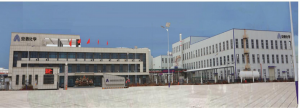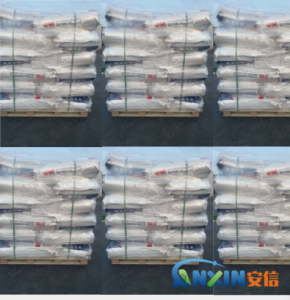Hydroxypropyl methylcellulose (HPMC) is a nonionic cellulose ether chemically modified from natural high-molecular-weight cellulose. Its excellent physical and chemical properties and wide applicability have made it an indispensable polymer functional additive in a variety of applications, including construction, medicine, food, and daily chemicals.
1. Key Performance Characteristics of HPMC
1.1. Excellent Thickening and Water Retention Properties
HPMC has excellent water solubility and forms transparent or translucent solutions in both cold and hot water. Its molecular structure contains hydroxypropyl and methoxy groups, giving it excellent hydrophilicity and film-forming properties. In construction materials such as cement mortar and tile adhesive, HPMC absorbs and locks in moisture, effectively extending the material’s open time and improving fluidity and workability during application.
1.2. Excellent Film-Forming and Adhesive Properties
After drying, the HPMC solution forms a uniform, flexible, and transparent film with considerable adhesive strength and durability. This property makes it widely used in architectural coatings, pharmaceutical coatings, food wrap, and other fields, improving product surface quality while also enhancing moisture resistance and scrub resistance.
1.3. Stable Thermal Gelation Properties
HPMC exhibits unique thermal gelation properties, meaning it transitions from a solution to a gel at a certain temperature. This property is particularly important in sustained-release drug formulations and food thickening systems, enabling temperature-controlled release rates or the formation of a stable colloidal structure.
1.4. Good Chemical Stability and Safety
As a non-ionic polymer, HPMC exhibits excellent stability in acidic, alkaline, and saline solutions and is resistant to chemical reactions. Furthermore, derived from natural cellulose, it exhibits excellent biocompatibility and is non-toxic, making it widely recognized as an environmentally friendly and safe additive.
1.5. Combining Rheological Control and Suspension Properties
HPMC can significantly increase system viscosity and improve rheological behavior. In liquid formulations, it prevents particle settling and maintains uniform dispersion. For example, in coatings, latex paints, and cosmetics, it can prevent sag, segregation, and improve the feel.
2. HPMC Industry Application Trends
2.1. Continued Growth in the Building Materials Sector
In the construction industry, HPMC is widely used as a water-retention thickener in dry-mix mortars, tile adhesives, self-leveling materials, and thermal insulation mortars. Future trends will focus on developing high-performance, low-dosage products, with a focus on improving sag resistance, workability, and weather resistance to meet the demands of green building and energy-saving construction.
2.2. High-End Applications in the Pharmaceutical and Food Industries
Pharmaceutical-grade HPMC has become a key excipient in controlled-release tablets, empty capsules, and ophthalmic preparations. With the growing global demand for plant-based capsules and vegetarian formulations, HPMC is gradually replacing gelatin as a mainstream material for pharmaceutical coatings and encapsulations. In the food industry, its thickening, emulsifying, and water-retention properties offer promising applications in baked goods, low-fat foods, and frozen products.
2.3. Upgraded Daily Chemicals and Personal Care Products
HPMC provides a smooth feel and stable viscosity control in shampoos, lotions, and skin creams. The future trend is to combine HPMC with natural extracts and bio-fermentation products to develop milder, biodegradable, and sustainable green formulations, satisfying consumers’ pursuit of “natural and safe” products.
2.4. Diversified Expansion of Industrial Applications
Beyond traditional applications, HPMC also demonstrates new growth potential in coatings, oilfield chemicals, ceramics, papermaking, and other industries. In particular, in water-based coatings, HPMC, as a thickening and dispersing agent, can replace some synthetic polymers, improving the product’s environmental friendliness and application stability.
2.5. Green and Functional Development
Future HPMC R&D will focus more on functional diversification and environmental friendliness. For example, through molecular structure modification or compounding techniques, HPMC can be endowed with temperature responsiveness, ion sensitivity, or biodegradability to meet the dual demands of high performance and sustainable development.
Due to its excellent physical and chemical properties, good environmental compatibility, and broad application base, HPMC has become a key component of global functional polymer materials. With the development of industries such as green building materials, healthy foods, and smart formulations, market demand and technological innovation for HPMC will continue to increase, and its industrial application trends are moving towards higher performance, higher added value, and a more environmentally friendly future.
Post time: Oct-23-2025








